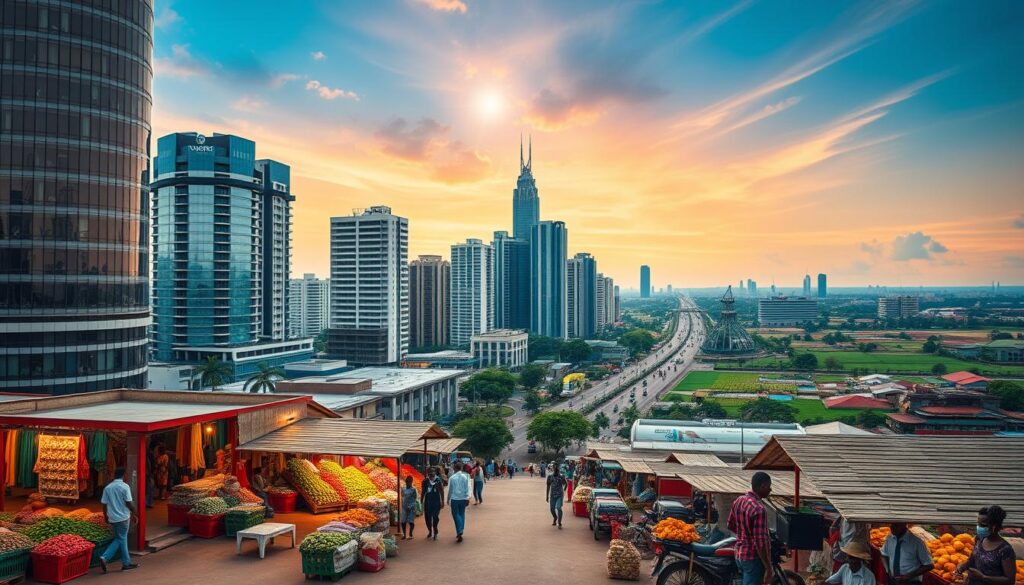Bridging Nations: The Angola-DRC Railway Restoration Project

The Angola-DRC Railway Restoration Project has emerged as a significant collaborative initiative between Angola and the Democratic Republic of Congo (DRC) aimed at reviving and modernizing a historic railway line. This restoration project holds immense potential to boost economic development, enhance trade relations, and foster regional integration within Central Africa. In this article, we delve into the history of the railway line, explore the anticipated economic benefits, highlight the various uses of the railway, and provide insights into the estimated project cost and available funding based on information from reliable sources.
Establishment of Angola-DRC Railway Line
The Angola-DRC railway, also known as the Benguela Railway, has a storied history that dates back to the late 19th century. Its construction began in 1902 under the Portuguese colonial administration and was completed in 1929, spanning approximately 1,344 kilometers. The railway line played a crucial role in facilitating the transportation of minerals, agricultural produce, and other goods between Angola’s Atlantic coast and the mineral-rich Katanga province of the DRC.
ALSO READ: Connecting Nations, Unlocking Potential: 5 Benefits of the Abidjan-Lagos Corridor Highway
The Railway Line Economic Benefits
Enhanced Trade:
The restoration of the Angola-DRC railway will significantly improve connectivity, providing a reliable and efficient means of transporting goods and commodities. It will facilitate trade between the two countries, reducing transportation costs, and potentially unlocking access to wider regional markets. The project is expected to bolster economic growth, attract foreign investment, and stimulate cross-border trade.

Resource Development:
The railway line passes through vast mineral-rich regions in both Angola and the DRC, such as copper and cobalt deposits. The restoration and modernization of the railway line will enable more efficient transportation of these valuable resources, contributing to increased extraction, processing, and export capabilities. This, in turn, can lead to job creation, revenue generation, and economic diversification.
ALSO READ: See The African Country That Unearthed Diamond That Could Be The Third-Largest In The World
Job Creation:
The restoration project will create employment opportunities during the construction phase as well as in related industries, such as logistics, maintenance, and support services. This influx of jobs will help alleviate poverty, improve living standards, and enhance social welfare in the region.
Regional Integration:
The revitalized railway line will serve as a vital link between Angola and the DRC, connecting them to neighboring countries such as Zambia and facilitating regional integration within the Southern African Development Community (SADC). Enhanced regional integration will foster economic cooperation, promote cross-border investments, and pave the way for greater political stability and socio-economic development.
Possible Uses of the Angola-DRC Railway
The restored Angola-DRC railway line will serve multiple purposes, benefiting various sectors of the economy:
Freight Transport:
The primary purpose of the railway will be to transport goods, including minerals, agricultural produce, manufactured goods, and general cargo. The railway offers a cost-effective and reliable alternative to road transportation, reducing congestion on roads and lowering transport costs. It will also provide a secure and efficient means of transporting goods over long distances, ensuring the timely delivery of commodities.

Passenger Transport:
Alongside freight transport, the railway line will facilitate the movement of people between Angola and the DRC. It will offer an affordable and convenient means of travel, improving connectivity and promoting tourism. This will encourage cross-border cultural exchanges, strengthen people-to-people interactions, and contribute to the growth of the tourism industry.
Estimated Project Cost and Available Funding
Based on information from reliable sources, the estimated cost of the Angola-DRC Railway Restoration Project is approximately $555 million. The funding for the project is expected to come from various sources:
Government Investments:
The governments of Angola and the DRC have demonstrated their commitment to the project by allocating funds from their respective budgets. These investments reflect the strategic importance of the railway restoration for regional development and economic integration.
International Support:
The African Development Bank, World Bank, and other international financial institutions have expressed their willingness to support the project through loans, grants, and technical assistance. These partnerships will play a crucial role in securing the necessary funding for the restoration project.

Private Sector Involvement:
Private investors, both domestic and international, have shown interest in the project due to its potential for long-term returns. Public-private partnerships may be forged to leverage private sector expertise and financial resources, ensuring the successful implementation of the restoration project.
Conclusion
The Angola-DRC Railway Restoration Project represents a significant milestone in the efforts to boost economic growth, enhance regional connectivity, and foster regional integration within Central Africa. With its historical significance and potential economic benefits, the project has garnered substantial support from governments, international financial institutions, and the private sector. The restoration and modernization of the railway line will facilitate trade, resource development, job creation, and regional cooperation. As the project gains momentum, it holds the promise of transforming the economic landscape of Angola, the DRC, and the wider Central African region, opening up new opportunities for development, prosperity, and sustainable growth.







Responses